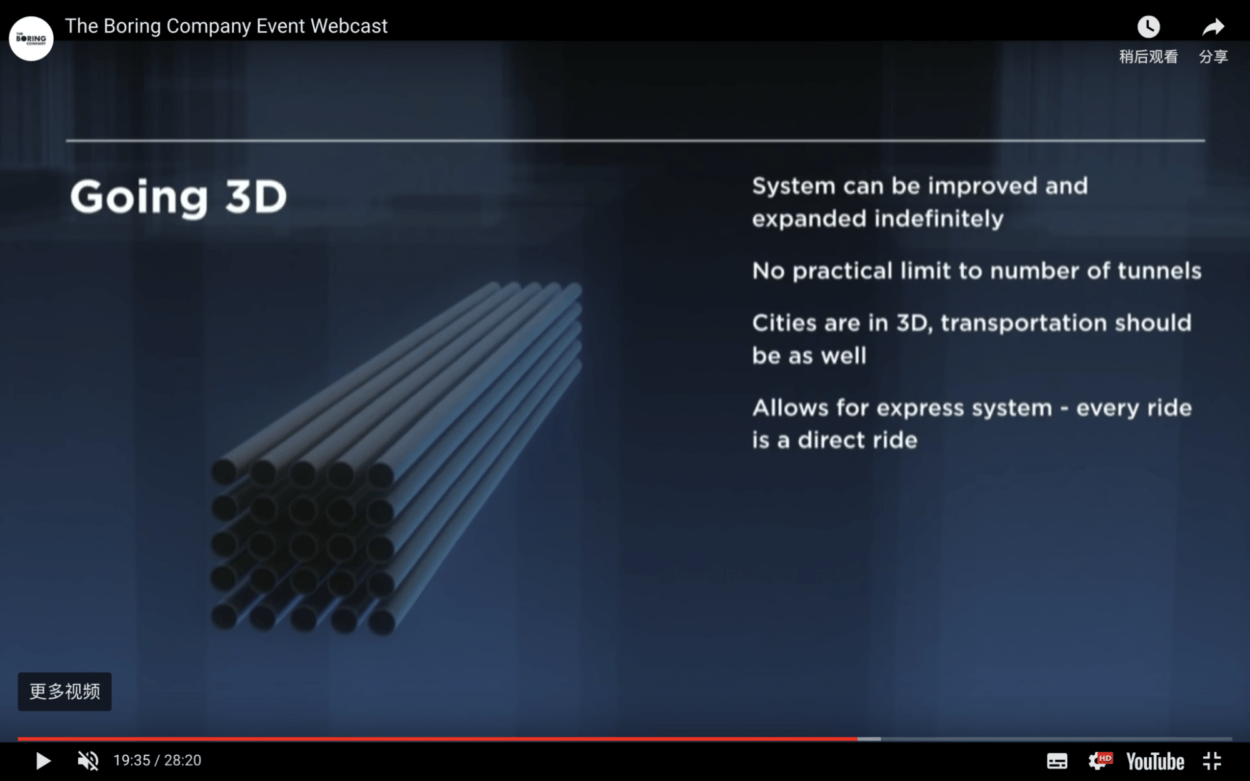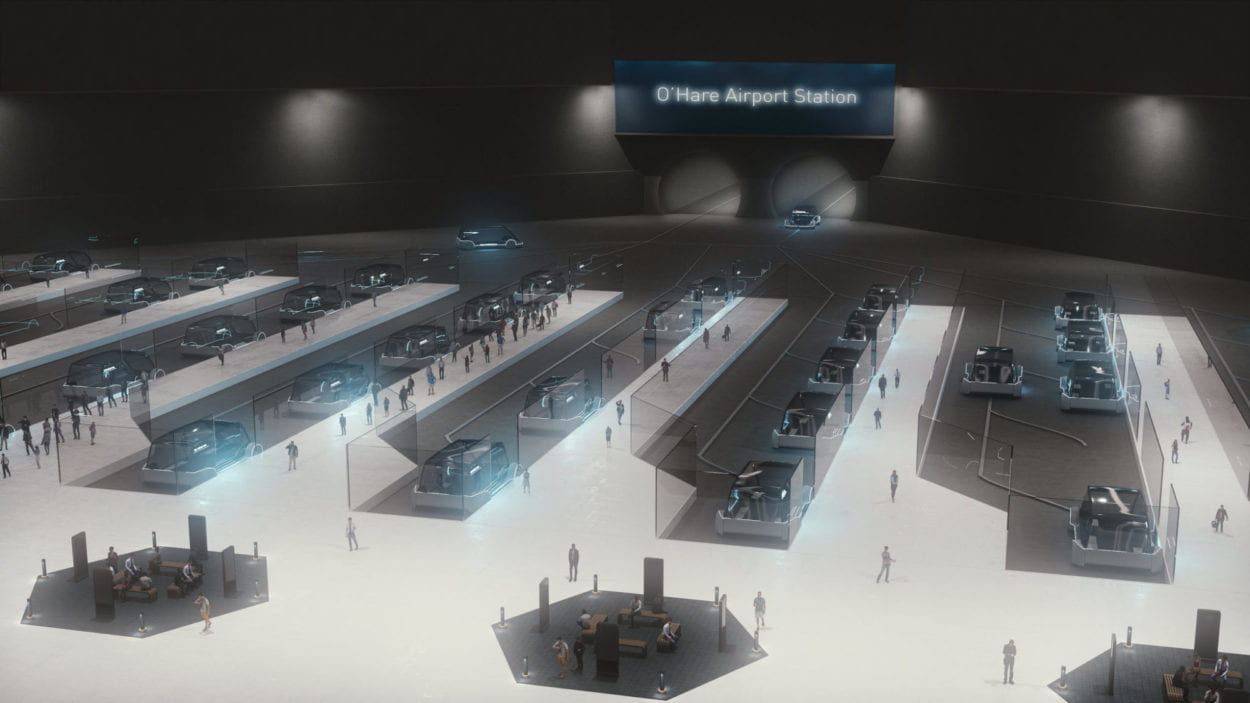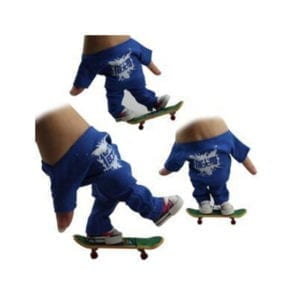The trend I pick is Elon Musk’s Boring Company. Their company goal is to create door-to-door express tunnels underground to relieve nowadays traffic pressure.
Elon’s company detects that there is heavy traffic pressure going on in big cities and something must be done to relieve this pressure. Right now, as Elon claims, even though our city is built in 3d, our road network is only 2d as it’s just a single layer on the ground. In the future, he proposes a change in this situation by building up more layers for city traffic.
There are two solutions to this problem, one is building upwards, which is flying cars; another is digging downwards, which is tunneling underground. The boring company abandoned the former idea because the flying cars are just helicopter-like vehicles that can be noisy and dangerous (falling things and when traveling in harsh weathers). The latter, on the contrary, is free from all the disadvantages of flying cars.
Elon and his team picture a future scenario of different layers of tunnels built underground, there will not be just one tunnel connecting two spots but will be multiple tunnels instead, because we have infinite possibilities and resources underground. There will be car-elevators that is only the size of two parking spots in the ending of the tunnel and by having no stations in the middle the tunnel enables full speed drive throughout the journey except for the deceleration zones by the ends. This can increase the transporting speed vastly.

I like how the Boring Company demonstrates its idea through this picture. In the future, we’ll have our private cars traveling like subways, but way faster, in tunnels and we’ll get into our destinations in no time.

Elon’s team starts from this idea and have designed three prototypes for tunneling machines so far. This new machine is 14 times faster than the old one which is slow, much more expensive and bothers nearby residents. It reduces the tunneling time by replacing the diesel locomotives with electric ones, one they plan to shrink the tunnel size to size that only fits one vehicle, which would fulfill his idea of fitting more tunnels underground and eliminating traffic jams inside the tunnels.

There will also be LOOPs and HYPERLOOPs in the tunnel that works as public transportation. Loops serve for shorter distant travels, which will also prioritize pedestrians and cyclists while Hyperloops aim for longer trips that require air-friction elimination to achieve faster speed. Both types of vehicles take up to 16 passengers and will play major roles in future public transportation.
Currently, the Boring Company’s testing tunnel has reached a speed of 110mph in their testing phase, their aim for future traveling speed is 150 mph. Their aim for tunneling speed is being as fast as a snail, the traditional way of tunneling is only 1/14 speed of a snail. They plan to “beat the snail” in drilling in the future.
